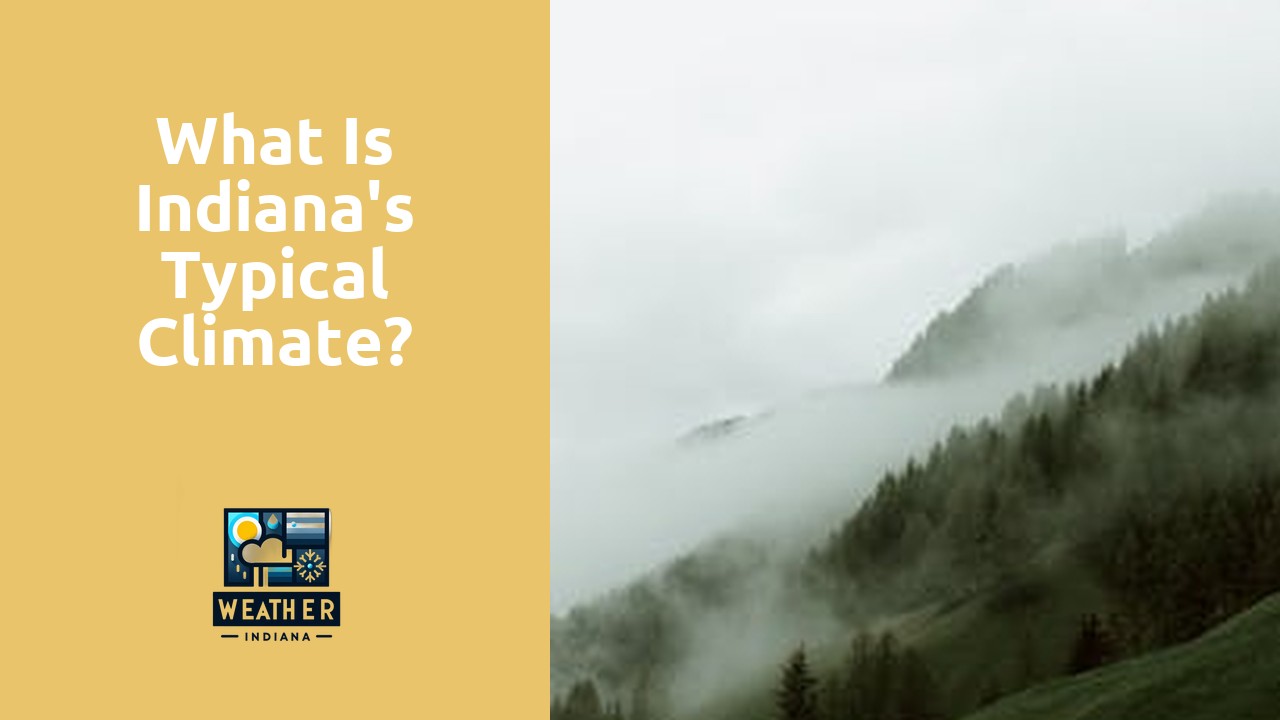Table Of Contents
Climate Change Trends in Indiana
Climate change trends in Indiana have been a topic of increasing concern in recent years. Data analysis shows a noticeable shift towards warmer temperatures and changes in precipitation patterns throughout the state. These changes have the potential to significantly impact various aspects of life in Indiana, from agriculture to urban development.
Historical data analysis reveals a clear upward trend in average temperatures over the past few decades. Winters are becoming milder, and summers are getting hotter, leading to potential consequences for crop yields and water availability. Policymakers, scientists, and communities must work together to understand and address these climate change trends effectively.
Historical Data Analysis
Historical data analysis of Indiana’s climate reveals exciting trends over the past decades. The state has typically experienced hot and humid summers with occasional severe thunderstorms and tornadoes. Winters have been relatively cold, with snowfall being shared, especially in the northern regions of the state.
Temperature records indicate a gradual increase in average temperatures in Indiana over the years, aligning with global climate change patterns. This has led to shifts in the timing of seasons, affecting agriculture and natural habitats in the region. Precipitation patterns have also shown variability, with some years experiencing significant droughts while others have seen excessive rainfall and flooding events.
Agriculture and Indiana’s Climate
Indiana’s climate plays a significant role in shaping the state’s agriculture industry. With warm summers and cold winters, Indiana experiences a diverse range of weather conditions throughout the year. The state’s climate influences crop growth patterns, pest prevalence, and overall agricultural productivity.
Farmers in Indiana face various challenges due to the state’s climate, including unpredictable weather patterns, extreme temperatures, and seasonal changes. To adapt to these conditions, farmers have implemented various strategies such as crop diversification, irrigation systems, and soil conservation practices. By continuously monitoring weather forecasts and implementing innovative techniques, Indiana farmers strive to overcome the obstacles presented by the state’s unique climate.
Farming Challenges and Adaptations
Farming in Indiana faces various challenges due to the state’s climate conditions. Erratic weather patterns, such as sudden temperature fluctuations and unpredictable rainfall, can significantly impact crop yields and overall agricultural productivity. Farmers often have to deal with extreme weather events like droughts, floods, and storms, which can damage crops and disrupt the farming cycle, leading to financial losses.
To adapt to these challenges, Indiana farmers employ various strategies to mitigate the risks associated with the changing climate. Some common adaptations include investing in advanced irrigation systems to ensure water availability during dry spells, practicing crop rotation to enhance soil fertility and reduce vulnerability to pests and diseases, and utilizing climate-resistant crop varieties that can withstand harsh environmental conditions. Additionally, farmers are increasingly adopting innovative farming techniques such as conservation tillage and cover cropping to promote soil health and sustainability in the face of climate change.
Urbanization Effects on Indiana’s Climate
Urbanization has significantly impacted Indiana’s climate in recent years. The increase in urban areas has led to the creation of heat islands, where built-up structures and pavement absorb and retain heat, causing higher temperatures in urban areas compared to rural regions. This phenomenon, known as the urban heat island effect, can lead to increased energy consumption for cooling, health risks due to heat stress, and changes in local weather patterns.
Furthermore, as urban areas expand in Indiana, there is a reduction in green spaces and vegetation, leading to fewer areas for natural cooling and air purification processes. This lack of greenery can exacerbate the heat island effect, contributing to overall warmer temperatures and poor air quality in urban environments. Additionally, the altered landscape due to urbanization can disrupt local microclimates, impacting rainfall patterns and potentially increasing the risk of flooding in certain areas.
Heat Island Phenomenon
In urban areas of Indiana, the heat island phenomenon has become a significant environmental concern. The increase in impervious surfaces like asphalt and concrete leads to higher absorption and retention of heat, causing urban areas to become much warmer than their rural surroundings. This temperature difference, known as the urban heat island effect, can result in various environmental and health problems for the residents of these densely populated areas.
Moreover, the urban heat island effect can also exacerbate air pollution levels, as the heat and stagnant air can trap pollutants closer to the ground. This can have adverse effects on respiratory health and overall air quality in these urban regions. As Indiana’s cities continue to grow and expand, policymakers and urban planners must implement strategies to mitigate the urban heat island effect through the incorporation of green spaces, reflective roofing materials, and other urban planning practices.
FAQS
What is the typical climate of Indiana?
Indiana has a humid continental climate characterized by hot, humid summers and cold winters.
Does Indiana experience extreme weather events?
Yes, Indiana experiences a range of extreme weather events, including thunderstorms, tornadoes, snowstorms, and heat waves.
How is climate change impacting Indiana’s weather patterns?
Climate change is leading to increased temperatures, more frequent and intense storms, and shifting precipitation patterns in Indiana.
How does Indiana’s climate affect agriculture in the state?
Indiana’s climate influences crop choices, planting schedules, and irrigation practices for farmers in the state.
What are some of the challenges farmers face due to Indiana’s climate?
Farmers in Indiana may face challenges such as unpredictable weather patterns, pests and diseases, and water availability for irrigation.

